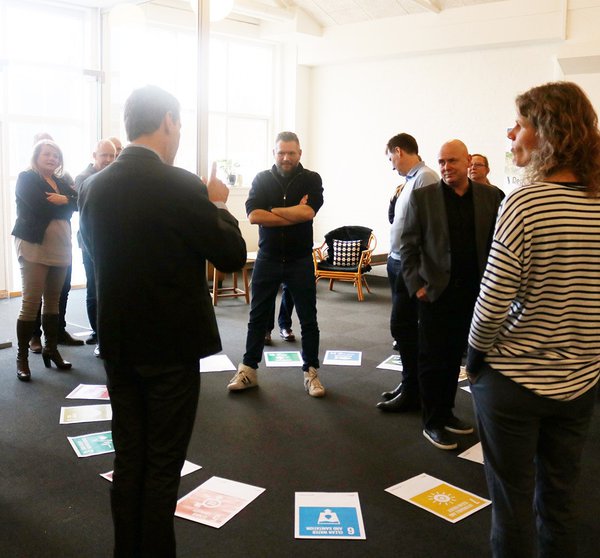Design thinking inspires stakeholders in the transition to a circular economy

The 17 UN Sustainable Development Goals reflect in many ways a circular economy and circular thinking. But how is it possible to combine these two domains? How can the Sustainable Development Goals be the direct starting point for the transition to a circular economy?
In Kolding, Denmark, the EmpInno partner D2i – Design to innovate presented one way to get started. It happened at Wasteland, a series of local events focusing on circular economy and targeting public stakeholders. 30 representatives from local authorities and business support agencies participated in an interactive workshop, using design methods to turn an abstract topic into a subject with concrete action possibilities.
Design thinking and design methods are relevant approaches when it concerns issues of big complexity, for instance how to create sustainable development and support the transition to circular economy. D2i – Design to innovate is one of several clusters in the Region of South Denmark implementing the regional smart specialisation strategy. By combining knowledge and competences on design and design methods, D2i provides public and private stakeholders with methods for innovation and strategy development, also when it concerns a complex area like circular economy.
The aim of this particular workshop was to inspire public stakeholders to work with alternative methods in reaching some of the goals set at political level. The participants obtained a practical and hands-on knowledge of the value that design thinking can bring to complex issues like circular economy and sustainable development. They learned that abstract concepts and issues can be turned into concrete and approachable topics through design thinking. In that sense, the workshop provided them with a first basis of implementing the smart specialisation strategy or at least a better understanding of how it can be implemented in a way that makes sense.
As an EmpInno activity, this workshop forms a concrete example of how strategy implementers like D2i – Design to innovate work together with strategy owners (policy makers) and other strategy implementers (business support agencies) on supporting the implementation of the regional smart specialisation strategy.
Picture: D2i - Design to innovate

